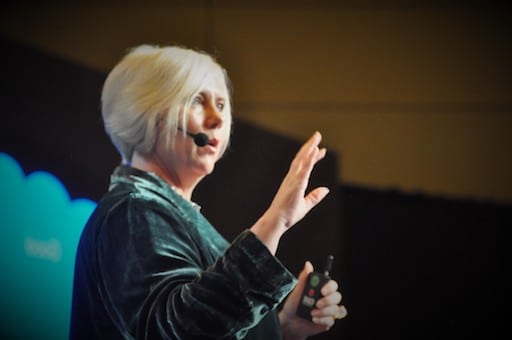It was 1976. I’m looking out of the cockpit window of a plane as we fly past Mount Kilimanjaro. The snow caps shine brightly. The pilot hands me a certificate, congratulating me for flying over the Equator for the first time.
Things have change since then.
Passengers are no longer allowed upfront into the plane cockpit. Kilimanjaro is no longer snow covered all year. I’m no longer a child.
If you are reading this on the internet, you probably aren’t either.
The child that was on that flight would have been out of school on Fridays. She’d have marched for the climate and the planet. I’m applauding Greta Thunberg.
The adult in me has asked myself, what responsibility can I take? What can I influence? How can I help you and other to too?
I can write, I can speak, I can do what good business mentors do – ask the questions that’s help the tough answers be found.
I can do what good leaders do, create better futures. As a board member I can. As a human being I can too.
Business Leadership in the Climate Crisis
As a business leader, I can ask is my business CO2 neutral today? Congrats, Jeff Bezos for committing Amazon to this by 2030. Go further, commit to being climate positive across all the SDGs by 2030.
After all, CO2 is part of the climate equation. So is plastic, clean water and waste.
Big business is more than 60% of the global GDP. Leadership decisions here count. Kudos for GoldmanSach’s for their advocacy for proactive climate investments and BNPParibas for your action too.
As a CEO, I know that if we set KPIs and reward the behaviors, the business will find solutions. They’ll look for them. New services, products and solutions will be created. New businesses and economies will be created.
To be clear, I’m advocating designing the future not simply responding to it.
“Rather than being screwed, if we act quickly, a sustainable future could be cleaner, quieter, safer, more technologically advanced and more prosperous than the alternative”. Paul Romer, winner of the 2018 Nobel Prize in economics
Romer identifies the challenges to this are not primarily economic, nor are they primarily technological, they are institutional, cultural and organizational. This is the leadership space.
The challenges are leadership.
A climate positive business economic system even more prosperous than the current destructive system is possible. In the last GFC, four trillion dollars was pumped into the US economy, a few years later, it had resulted in a $34 trillion dollar expansion. Good ROI. #ClimateCrisis is as strong a reason for central bank action as the GFC.
As a stakeholder and shareholder and board member, vote and expect Boards to look at sustainability as more than business sustainability. Go for climate positive across the SDGs by 2030.
Some Boards are interpreting the Environmental, Societal and Governance (ESG) reporting requirements required of listed companies as business sustainability alone. I contributed expert input to Board Governance needs in Asia to the CPA Australia earlier this year. It’s clear that national legislations vary significantly.
Go further than the legislation. Ask yourself, do you plan on being alive in 10 years? Do you want to breathe? Do you want a business and a planet that’s dealing with the warfare that comes from a billion people being displaced from storm, floods and collapsed food systems?
As a human, it is frankly scary. I look back to that young girl in a plane looking out at the majesty of Mount Kilimanjaro and realize there is a lot I can do as a human.
Wisdom of the ages says we reap what we sow. I’d prefer to sow a prosperous human economic system with a sustainable green planet.
I know it’s not over night.
Instead of saying it’s too hard or that it’s impossible. It’s about ‘do it’. The climate crisis is up there with nuclear war (negative) and man on the moon (positive). We avoid that bad. We got man there in under a decade. We gained that good.

Getting Practical about Business Action for the Climate Crisis
As a business woman, I’m practical. I like visions and goals to have a road map and practical frameworks.
Here is a practical framework to measure progress to sustainability. It was developed for a client’s business and it’s shared with permission. May it spark your own business goals.
The columns represent goals, while the rows address key elements of their business success.

* SDG #5 highlights that economic equity between men and women is an accelerator of sustainability.
** Unicorns have a super agile adaptive mindset. Necessary for the pace of change that climate and IR4.0 have for business.
Do I know how their business will achieve this at this precise moment? No, but then no unicorn knows how it will achieve it’s goal when it starts.
Climate neutral is a good start. The foot needs to get off the polluting peddle. Kudos to L’Oreal for your work piloting this across your supply chain.
Climate positive is next. Stabilize what’s already out there currently creating damage. And then, to get to the deeper need to systematically operate our business and economic system on the basis of climate sustainability.
It means clean up work.
Take Climate Action Personally
I’m looking at my life. I’ve a backlog of pollution, of CO2, of plastic and waste to consider.
I get how China can say to the West that you sunk masses of carbon into the system in the past. While much of the focus is about getting to climate neutral, it’s also about getting the past pollutants out of the system.
I was on that flight over Mount Kilimanjaro. Even though my parents were flying me back to see my grand parents, as an adult, I can say I was there. I can choose to offset and clean up on my past at the same time as I focus on my business being CO2 neutral now and being systemically climate positive by 2030.
On Sunday, in honor of that girl on the plane, in honor of the kids who march Fridays and in honor business leaders who are showing up, I did something practical. You can do this too.
I got out excel.
I worked out how many flights I’d taken in my life. I included the ones my parents had put me on when I went off to boarding school. I counted the ones I’ve taken for business.
Total so far: 980 flights.
This is 1960 takes offs and landings – where the most fuel is consumed.
I estimated the flying hours with short haul flights and long haul flights. It’s 7134 flying hours.
I’m committed to offsetting these and to do the same to new flights.
I put money where my mouth and words are and took action. To begin to offset this, I’ve invested in protecting fruit trees planted by a women’s society. 14974 days of protection. It’s a start. Thank you #B1G1 for making this possible.
Unicorns begin small, and they work it out.
I invite you to see your business as a climate unicorn. Imagine the change it can make, the billions that it can benefit, and yes, the value you will create in the process.
It includes prosperous people, successful business and a thriving planet. It’s possible.
Do you believe it’s possible? What’s your experience with going for the impossible and making it happen? Does your business get why it’s important to act today? What suggestions do you have for action in your business?
Cheers
Joanne



